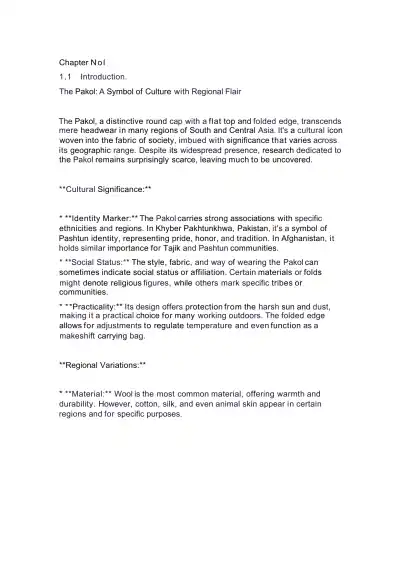Page 1

Loading page ...
A cultural insight-sharing platform focused on traditional attire like the Pakol cap, highlighting its identity, status, and regional variations across South and Central Asia. Ideal for students, researchers, and culture enthusiasts.

Loading page ...
This document has 7 pages. Sign in to access the full document!